After 11 inches of snow on November 11, things got quiet weather-wise. Winter did not quite settle in. We got less than two inches of snow in December, and just a dusting on Monday—not enough to stick to the sidewalks. So what happens in the pause, the interregnum, between fall and winter?
One of the potential issues with nonnative plants is that their internal clocks are not set to local conditions. In some cases, they will break dormancy during a mild winter spell, and then freeze and die.
The Old West Side columbine, Aquilegia alpina, is on its own clock. It will continue to grow slowly until the weather stays below freezing, but it is hardy. This plant was imported from Europe’s high meadows and the slopes of the Alps to southeastern Michigan, ostensibly by the area’s German immigrants. It seeds around, but not obnoxiously so. It’s easy enough to pull seedlings or dig them up and move them. I trim all the foliage at first frost and also in midsummer when it gets ratty. Trimmed foliage may occasionally be infiltrated by leafminers, especially in the summer, so it’s best to relegate it to a hot compost pile—the city compost or one assisted by livestock, small or large.
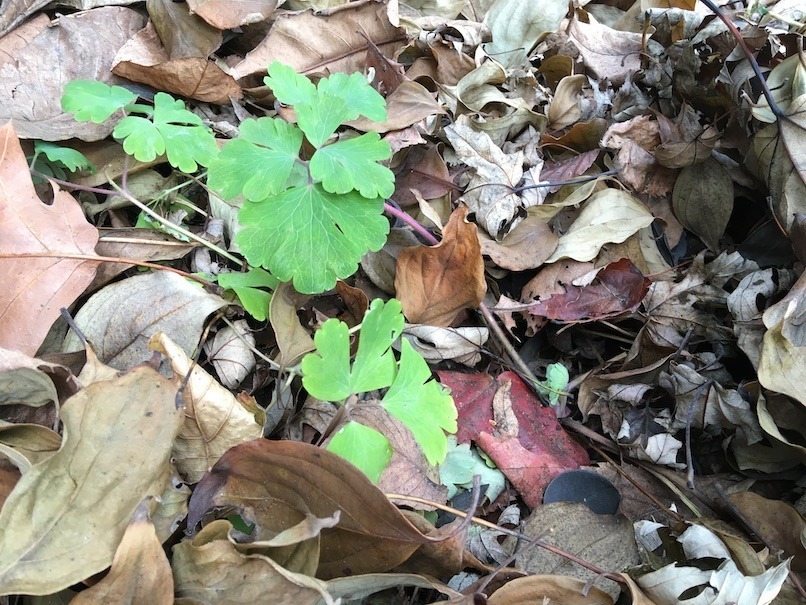
Two other hardy and active growers in December are kitchen garden herbs: chervil and parsley. Both are members of a large family, the Umbelliferae—think of Queen Anne’s lace and you will remember the family name. The flowers look umbrella-like, while the ripening seedheads look like wind-turned umbrellas. The alternate family name is Apiaceae, named after the genus that contains celery and celeriac. It’s easier to remember umbrellas….
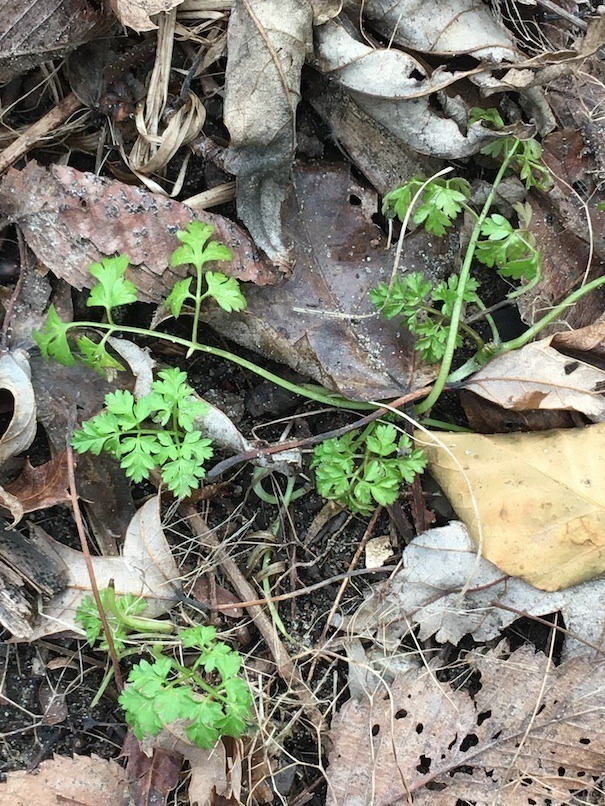
Chervil sprouts when it is cool, and if that’s December, so be it. Its active growing seasons are spring and fall. I use it in salads and on chicken sandwiches instead of lettuce.
Parsley also sprouts when it’s cool.
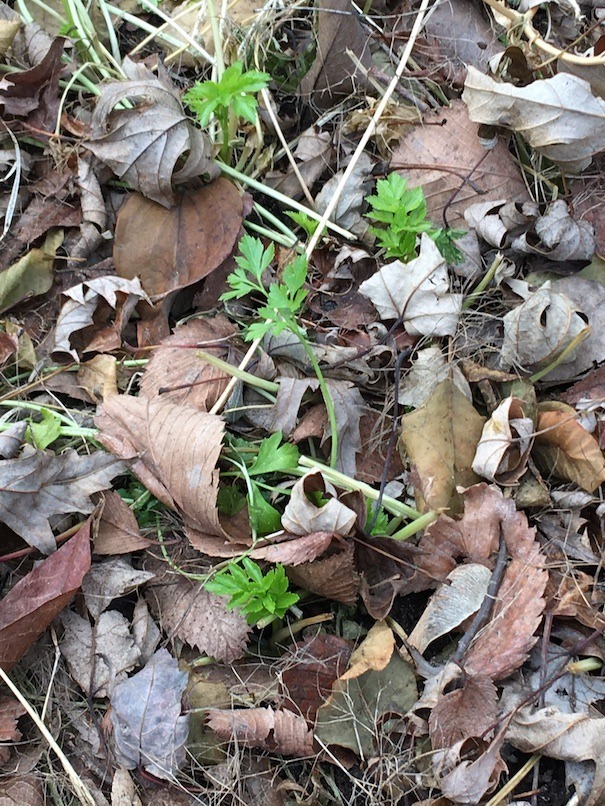
I eat a lot of parsley when I can beat the rabbits to it. Unfortunately, you can count on rabbits to be hungry; this is another hallmark of the interregnum—critters are not quite hunkered down, and there is little to eat. Some of the parsley and most of the native Pennsylvania sedge, Carex pensylvanica, has already been mowed. We won’t even talk about the blue fescue.
Pennsylvania sedge greens up in the spring, remains green when the lawn is gaspingly dry in summer, and stays green until it is fully winter—in January.
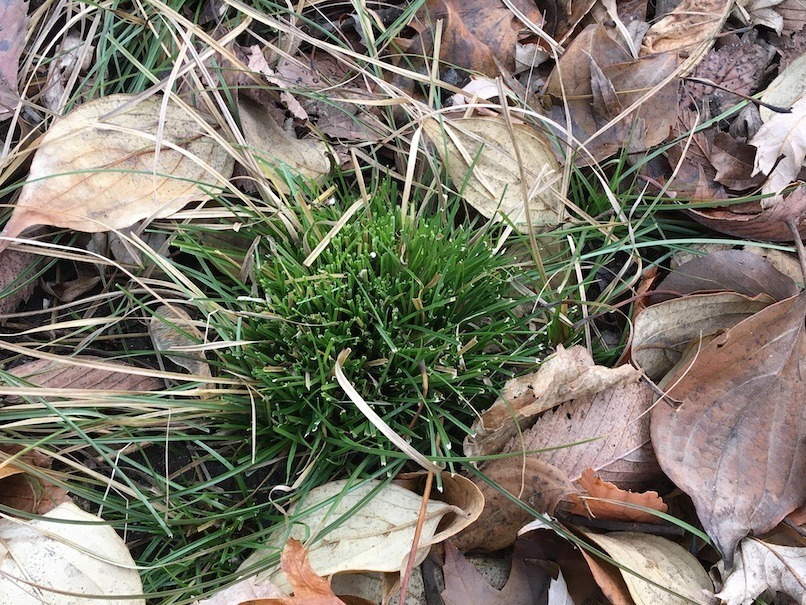
If only those rabbits would work on the lawn with the same diligence.
Another native, hepatica, has been growing slowly, and will continue until the temperature drops below freezing, day and night. These leaves will fall off in early spring and a new set will grow in. The rabbits only bother those brand-new leaves in early spring.

The crested irises are looking for their spring spots.

I just love this little iris, but I suspect that you have figured that out. It is not a southeastern Michigan native, but it comes as close as the southern shore of Lake Erie, in Ohio. This is what I call the bear-claw stage. It clambers onto the bricks, making a break for the lawn, but it does not seem to be able to take hold in what passes for lawn.
Looking at that map again, I cannot help but think that its absence in most of Pennsylvania, New Jersey, and New York—and perhaps Connecticut too—is due to habitat destruction. We have to know, and care about, what we have and what we’ve lost to prevent losing more. Iris cristata is not a delicate plant, but there’s a big gap on that map.
One of my sanity pauses this winter is a drawing of the various stages of Iris cristata’s flower development. This means doing a lot of studies to get the color and values correct, and to just figure out the composition. I got quite wrapped up in a value study, which took on a life of its own. My art teacher got excited about this one. Egged on, I put it in a nice little off-the-shelf frame.
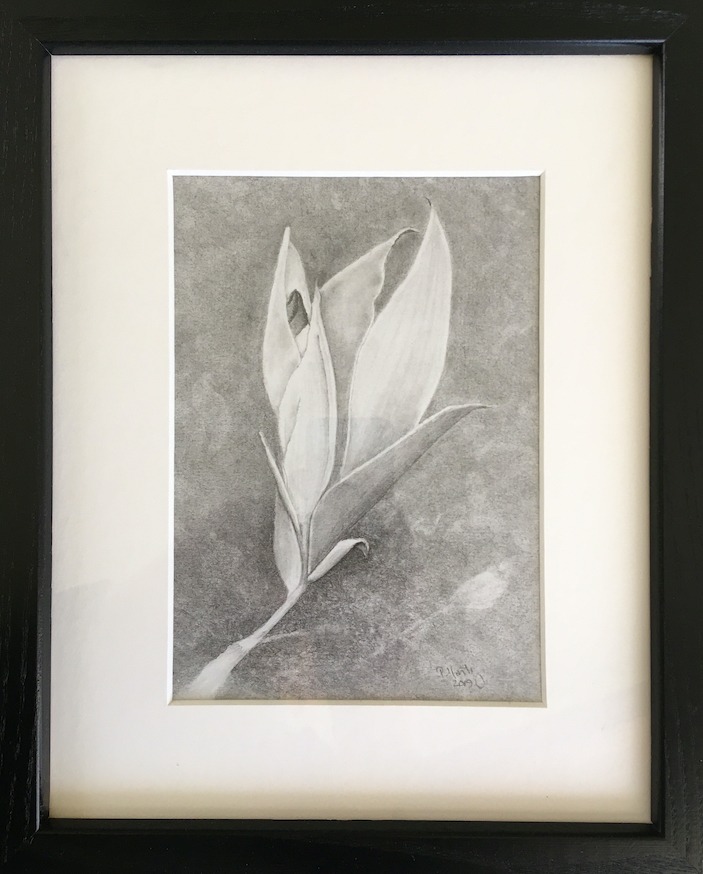
I will be playing with these in pencil, graphite and colored, for the rest of the winter. The flower color is hard to capture digitally, so the final drawing probably will not be finished until mid-May 2020. I can get the color close before that, but I will need to being looking at live flowers to finalize it.